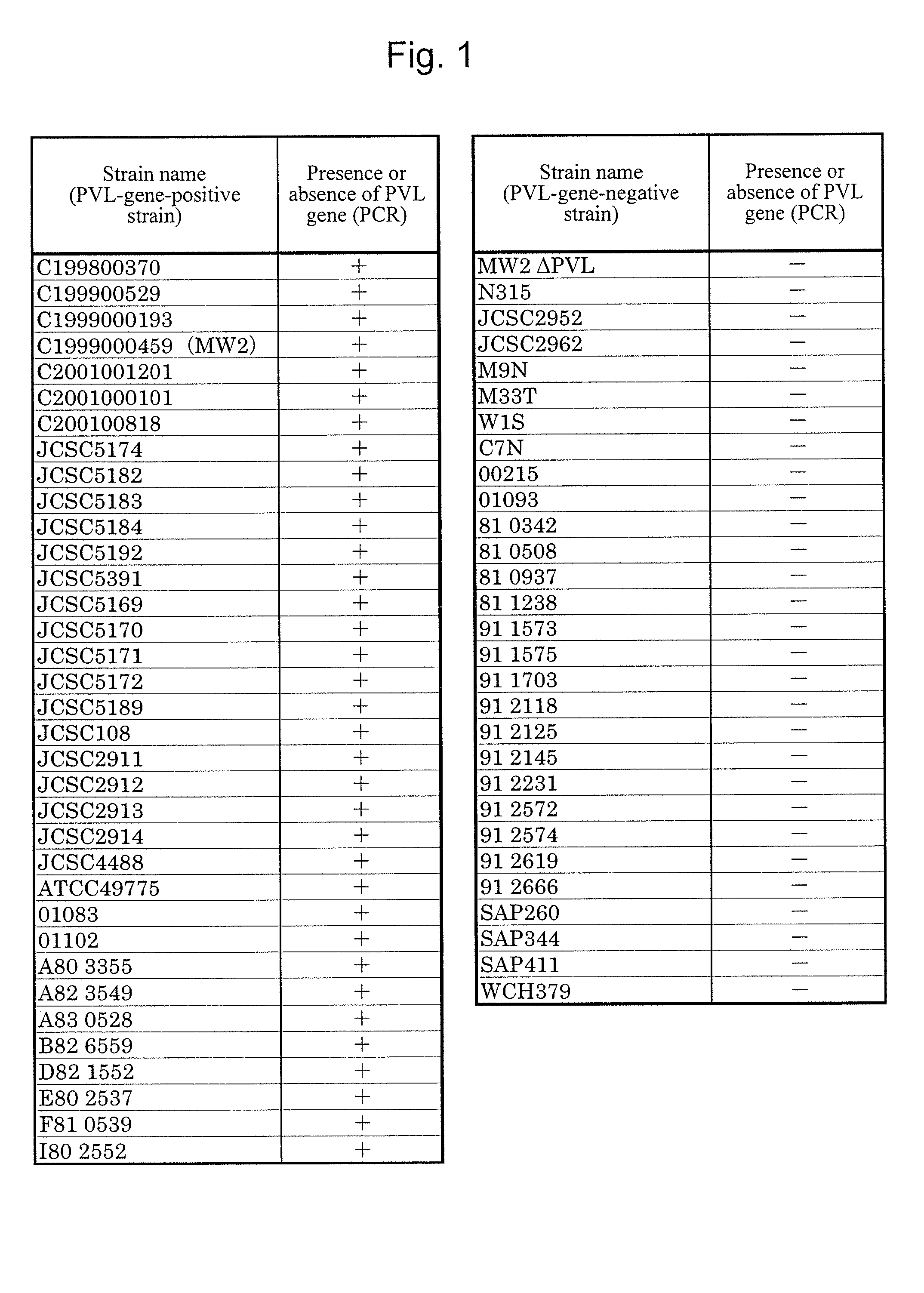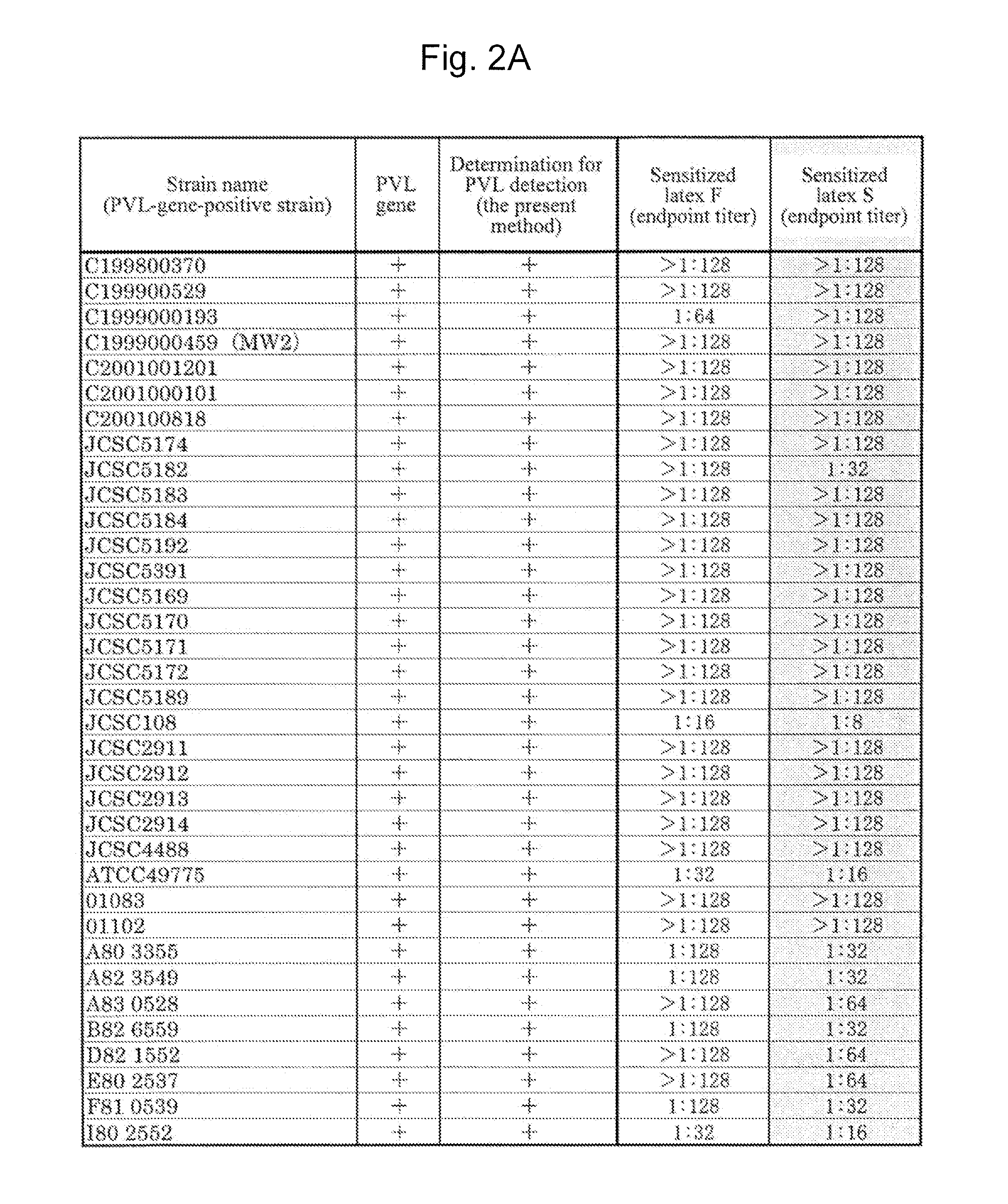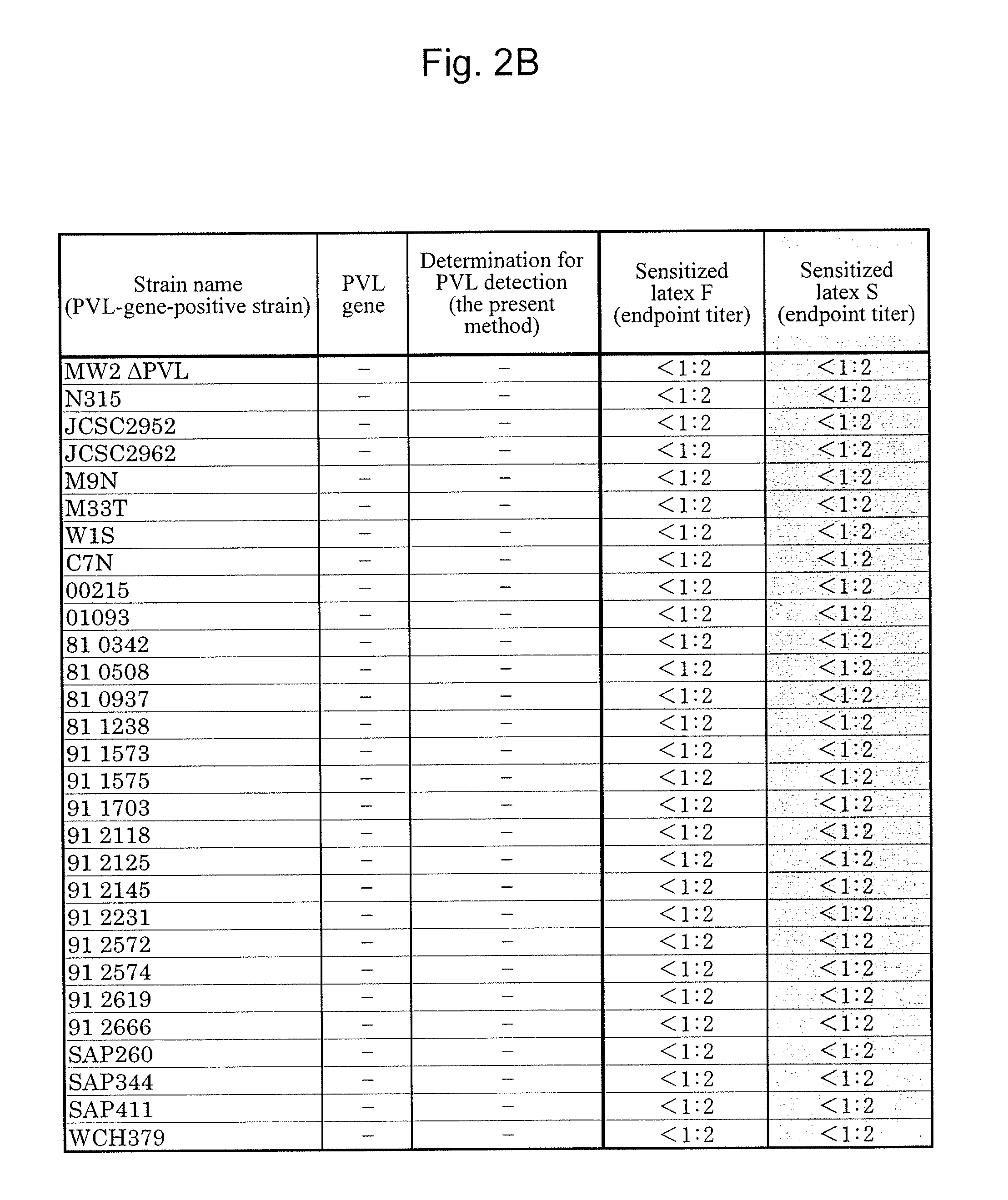Toxin detection method
a detection method and technology of pvl, which are applied in the field of antigen specific to a bacterial-produced antigen substance, can solve the problems of insufficient research on the method of directly preventing or treating a disorder caused by pvl produced by i>staphylococcus aureus/i>, and achieve excellent specificity, high sensitivity, and high reliability
- Summary
- Abstract
- Description
- Claims
- Application Information
AI Technical Summary
Benefits of technology
Problems solved by technology
Method used
Image
Examples
example 1
Production of Immunogens
[0098]A recombinant LukF-PV and a recombinant LukS-PV were prepared by the method described below.
[0099]A Staphylococcus aureus MW2 strain (MW2 strain), which is a PVL-gene-positive strain, was subjected to shaking culture in an LB medium (4 mL) at 37° C. for 20 hours under aerobic conditions. The MW2 strain chromosomal DNA was extracted from the culture solution with the use of an ISOPLANTII DNA extraction kit (NIPPON GENE).
[0100]In order to extract the gene of interest for recombinant production, primers were prepared based on total nucleotide sequence information (LANCET 2002; 359:1819-1827). Further, in order to prevent mixing and amplification of non-specific PCR products, the nucleotide sequence encoding the amino acid sequence of a recombinant LukF-PV (903b.p) and the nucleotide sequence encoding the amino acid sequence of a recombinant LukS-PV (855b.p) were extracted by two-stage PCR. The first PCR amplification was carried out using the MW2 strain ch...
example 2
Production of Polyclonal Antibodies
[0104]In order to obtain a polyclonal antibody against LukF-PV, the purified LukF-PV (50 μg) produced in Example 1 and Freund's complete adjuvant were mixed, and the mixture was subcutaneously injected into a rabbit for immunization. Further, for booster immunization, the purified LukF-PV (100 μg) and a Freund's incomplete adjuvant were mixed, and the mixture was subcutaneously injected into the rabbit twice in total at a 2-week interval. For another booster immunization, the purified LukF-PV (50 μg) was intravenously injected into the rabbit twice in total at a 2-week interval. On day 5 after the final immunization, the immunized rabbit was subjected to exsanguination such that the anti-LukF-PV serum was obtained.
[0105]In addition, in order to obtain a polyclonal antibody against LukS-PV, purified LukS-PV (50 μg) and Freund's complete adjuvant were mixed, and the mixture was subcutaneously injected into a rabbit for immunization. Further, for boos...
example 3
Removal of Cross-Reactivity Between LukF-PV and LukS-PV
[0117]In order to provide a polyclonal antibody specific to LukF-PV and a polyclonal antibody specific to LukS-PV, an absorption operation was carried out to remove the confirmed reactivity to LukD and that to HlgB from the anti-LukF-PV serum and also to remove the confirmed reactivity to LukE, that to HlgC, and that to HlgA from the anti-LukS-PV serum.
[0118]For production of a column used for the absorption operation, Formyl-Cellulofine (Seikagaku Corporation) was used as a carrier. For the anti-LukF-PV serum, purified LukD and purified HlgB were used as ligands for absorption. For the anti-LukS-PV serum, purified LukE, purified HlgC, and purified HlgA were used as ligands for absorption. Columns were prepared by allowing a different ligand to bind to a single column in accordance with the method described in “Cellulofine Affinity Chromatography” published by Seikagaku Corporation.
[0119]For absorption of anti-LukF-PV serum, an ...
PUM
| Property | Measurement | Unit |
|---|---|---|
| concentration | aaaaa | aaaaa |
| pH | aaaaa | aaaaa |
| concentration | aaaaa | aaaaa |
Abstract
Description
Claims
Application Information
 Login to View More
Login to View More - R&D
- Intellectual Property
- Life Sciences
- Materials
- Tech Scout
- Unparalleled Data Quality
- Higher Quality Content
- 60% Fewer Hallucinations
Browse by: Latest US Patents, China's latest patents, Technical Efficacy Thesaurus, Application Domain, Technology Topic, Popular Technical Reports.
© 2025 PatSnap. All rights reserved.Legal|Privacy policy|Modern Slavery Act Transparency Statement|Sitemap|About US| Contact US: help@patsnap.com



